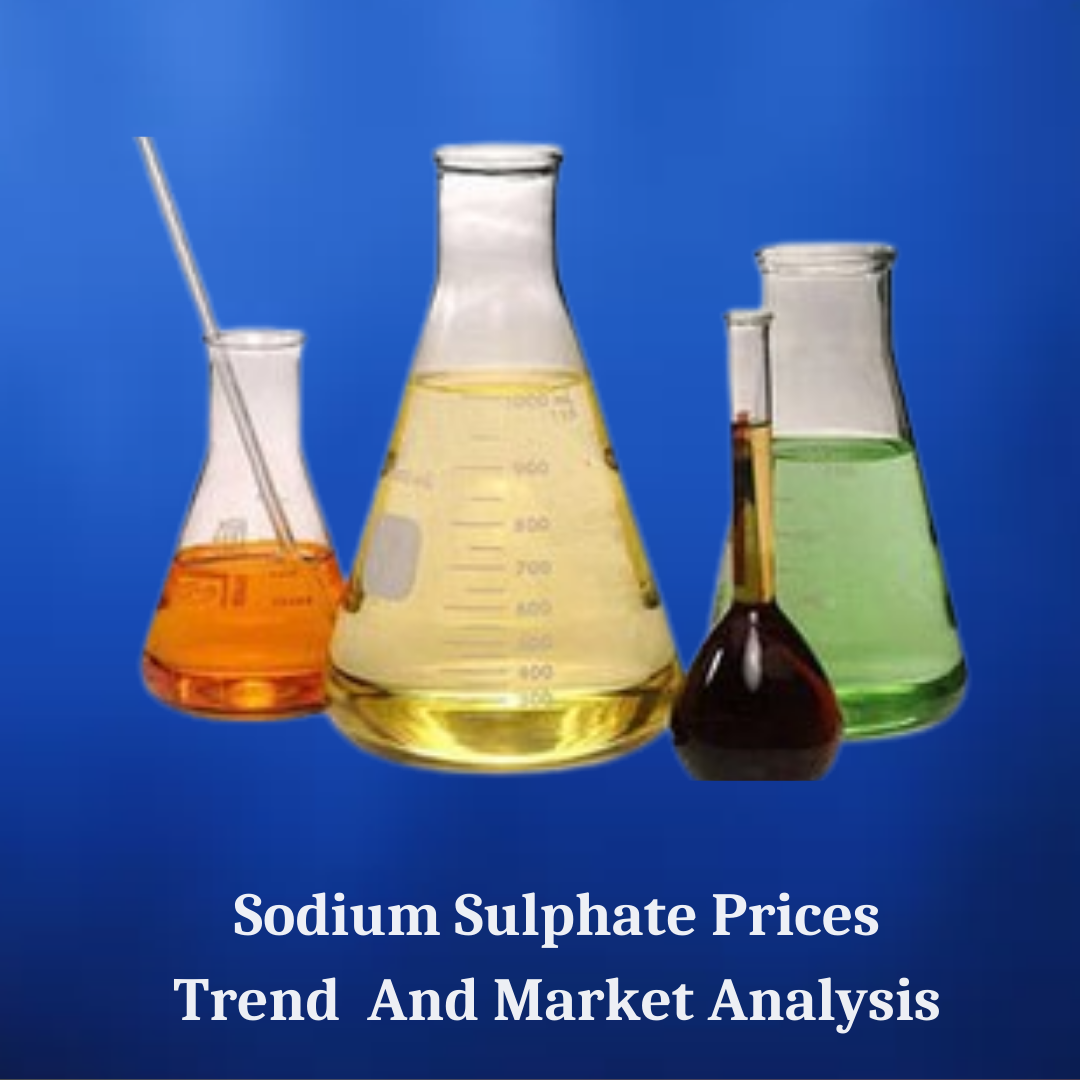Sodium sulfate (Na₂SO₄) is a versatile inorganic compound used extensively in detergents, textiles, glass manufacturing, and the paper industry. For businesses operating in these sectors, tracking Sodium Sulfate price trend analysis is essential. Price movements affect not just product costs but also procurement strategies and long-term profitability. This article offers a complete view of sodium sulfate market trends, forecasts, demand-supply dynamics, and leading global suppliers to help stakeholders stay informed and competitive.
👉 👉 👉 Please Submit Your Query for Sodium Sulphate Price trends, forecast and market analysis: https://tinyurl.com/2wmppd7w
Global Sodium Sulfate Market Overview
The global sodium sulfate market was valued at approximately USD 2.35 billion in 2024 and is projected to reach around USD 3.67 billion by 2035. This growth translates to a compound annual growth rate (CAGR) of 4.6%, driven by increased demand in detergents, construction, and textiles.
Regional Highlights:
- Asia Pacific: Held about 23% of the global market share in 2024. Markets like China and India are experiencing rapid growth due to expanding detergent and textile industries.
- North America: Accounted for over 40% of global revenue in 2024. The region benefits from large-scale natural sodium sulfate reserves and high detergent consumption.
- Europe: Held over 30% of the global share, with consistent demand from textile and glass manufacturers.
Sodium Sulfate Price Trend Analysis
Q1 2024
Prices rose moderately due to increased raw material and energy costs. Seasonal restocking by detergent manufacturers also contributed to a slight upward shift.
Q2 2024
Market stabilized as global supply chains adjusted. Efficiency gains in production and stable energy prices helped keep sodium sulfate prices in check.
Q3 2024
Prices remained relatively unchanged, though some regions saw a mild increase due to construction sector demand. Demand from the textile industry also added slight upward pressure.
Q4 2024
A moderate rise in pricing occurred due to increased seasonal demand in detergents and glass manufacturing, but prices stayed within predictable ranges.
Q1 2025
Early 2025 saw steady pricing with minimal fluctuations. Balanced supply and consistent demand across key sectors kept the market relatively stable.
Demand-Supply Dynamics
Key Demand Drivers:
- Detergents: Sodium sulfate is widely used as a filler in powdered detergents. The rise in hygiene awareness continues to support strong global demand.
- Glass Industry: Acts as a fluxing agent, lowering melting temperatures in glass production—an application expected to grow with the expansion of the construction sector.
- Textiles: Used during dyeing processes. With Asia-Pacific dominating textile exports, regional demand for sodium sulfate remains robust.
- Construction: Used as a stabilizer in cement and concrete. Urbanization across emerging economies continues to stimulate demand.
Supply Factors:
- Natural Resource Dependence: Extracted from minerals like mirabilite and glauberite. Seasonal and environmental factors can affect mining output.
- Logistics and Transport: Global freight issues and fluctuating fuel costs occasionally disrupt supply chains, impacting pricing.
- Energy Costs: Energy-intensive manufacturing methods mean sodium sulfate production costs are vulnerable to electricity and fuel price changes.
Key Global Suppliers of Sodium Sulfate
- Saskatchewan Minerals Inc. (Canada)
A leading North American producer of high-purity natural sodium sulfate. Their consistent quality and production capacity support domestic and export demand. - Nippon Chemical Industrial Co., Ltd. (Japan)
Supplies sodium sulfate to various sectors, including glass and detergents. Known for advanced manufacturing techniques and high product quality. - Elementis Plc (UK)
Covers applications in detergents, textiles, and other industrial processes. Their R&D focus drives innovation and efficiency. - Lenzing AG (Austria)
Active in the textile supply chain, particularly dyeing applications. Sustainability is a core focus in their operations. - Shikoku Chemicals Corporation (Japan)
Serves regional and global markets with industrial-grade sodium sulfate. A strong presence in the detergent sector makes them a vital supplier. - Searles Valley Minerals (USA)
One of the most established producers in North America. Their natural sodium sulfate operations supply industries across the western U.S. and abroad. - Cooper Natural Resources (USA)
With large natural reserves, Cooper plays a central role in U.S. sodium sulfate production. They also serve export markets in Latin America. - Alkim Alkali Kimya A.S. (Turkey)
Major supplier in Europe and the Middle East. Produces sodium sulfate from natural brine sources, with emphasis on cost efficiency. - China National Salt Industry Corporation (China)
Among the top producers in Asia, supplying to local manufacturers of glass, textiles, and chemicals. - Hungarian Sodium Sulphate Company (Hungary)
Supplies Central and Eastern European markets. Their reach extends into detergents and paper processing sectors.
Regional Overview of the Sodium Sulfate Market
Asia-Pacific
The largest producer and consumer of sodium sulfate globally. China dominates the landscape with well-established supply chains. India’s growing detergent and textile sectors are fueling demand.
North America
Robust detergent manufacturing keeps demand strong. Natural sodium sulfate deposits in the U.S. ensure reliable domestic supply and export capability.
Europe
A mature market with steady industrial consumption. Environmental regulations are encouraging energy-efficient production and alternative uses for byproducts.
Latin America
Emerging demand, especially in Brazil, Chile, and Argentina. Limited local production opens opportunities for imports from North America and Asia.
Middle East & Africa
Gradual growth supported by increased construction activity and consumer goods production. Opportunities exist for long-term supplier partnerships in the region.
Sodium sulfate remains a crucial industrial chemical, with broad applications that continue to expand globally. The market is expected to grow at a steady CAGR of 4.6% through 2035, led by rising demand in detergents, textiles, construction, and glass.
Tracking the Sodium Sulfate price trend analysis enables better decision-making for manufacturers, distributors, and procurement professionals. As global supply chains evolve and raw material dynamics shift, maintaining flexibility and strong supplier relationships will be key to managing costs and ensuring uninterrupted operations.
Also Read: Sodium Lauryl Sulfate Price Trend Analysis: Forecast, Demand, Supply & Top Global Suppliers 2025

